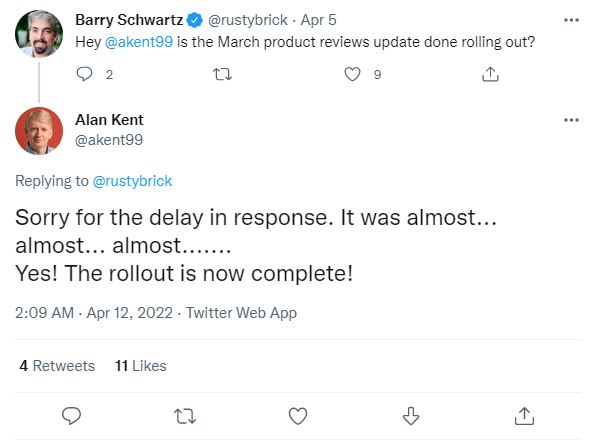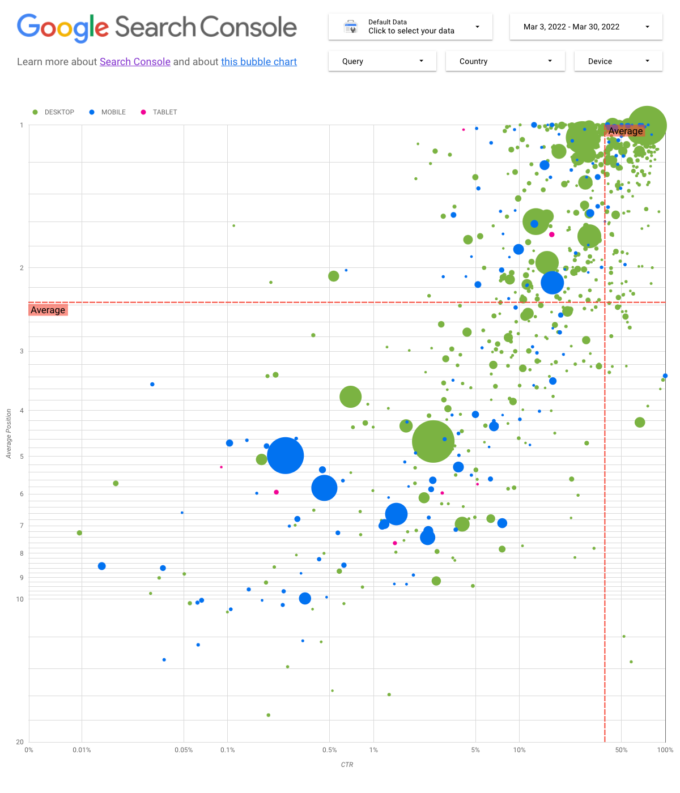Pinterest Bans Climate Change Misinformation
Pinterest implements a new policy impacting how information about climate change is presented in ads and organic content.
An update to Pinterest’s community guidelines prohibits the sharing of false or misleading information about climate change.
The company says it’s the first major platform to have clear rules around the climate change discourse.
Let’s dive in to see how this policy change can impact your advertising and organic content.
The New Policy
Per Pinterest’s update:
“Our new policy makes Pinterest the only major digital platform to have clearly defined guidelines against false or misleading climate change information, including conspiracy theories, across content and ads.”
What The Policy Means
Pinterest will start removing content about climate change that it believes could potentially harm the public’s safety, trust, or well-being. Content that can be removed includes:
- Deniability of :
- The existence or impacts of climate change
- Human influence on climate change
- Climate change is backed by scientific consensus
- False or misleading information about how to combat climate change, if these solutions contradict scientific consensus
- Misrepresentation of scientific data in order to disintegrate trust in climate experts
- Harmful, false, or misleading content about public safety emergencies, such as natural disasters
Impacts On Advertising
To make it clear to advertisers, Pinterest has also updated its advertising guidelines with this language.
The advertising guidelines updates will prohibit ads about climate change that:
- Contain conspiracy theories
- Have misinformation or disinformation
The goal with this update is to cultivate a community of trusted resources on the platform.
Navigating New Organic Content
Creators who are in these countries are eligible for this series:
- United States
- United Kingdom
- Australia
- Germany
- France
- Japan
- Brazil
- Mexico
- Argentina
- Indonesia
- India
These pins will be called Idea Pins, which give consumers inspiration on tips and tricks, including:
- Thrifting or upcycling
- Minimizing food waste
- Replacing common household products with greener products
Source: Pinterest Bans Climate Change Misinformation
Google March 2022 product reviews update is finished rolling out
Google has confirmed that the March 2022 product reviews update is now finished rolling out. This update has officially completed rolling out over a 19 day period, first being kicked off on March 23, 2022.
The announcement. “The Google product review update is fully rolled out. Thank you!” Google’s Alan Kent wrote on Twitter.

March 2022 product reviews update. As a reminder, the March 2022 product reviews update started to roll out at about 12:00pm ET on March 23, 2022. This update took 19 days to roll out after it was announced. So this update started on March 23, 2022 and lasted through April 11, 2022.
Big update. This update was not as big as the December 2021 update, based on data from the data providers.
More on the March 2022 products reviews update
The SEO community. The March 2022 product reviews update seemed to have a slow start, with some volatility as early as March 23rd but then most of the volatility showed up on March 31st. I was able to cover the community reaction in one blog post on the Search Engine Roundtable. It includes some of the early chatter, ranking charts and social shares from some SEOs. In short, if your site was hit by this update, you probably felt it in a very big way but this was not as widespread as the December update in terms of the chatter within the community.
What to do if you are hit. Google has given advice on what to consider if you are negatively impacted by this product reviews update. We posted that advice in our original story over here. In addition, Google provided two new best practices around this update, one saying to provide more multimedia around your product reviews and the second is to provide links to multiple sellers, not just one. Google posted these two items:
- Provide evidence such as visuals, audio, or other links of your own experience with the product, to support your expertise and reinforce the authenticity of your review.
- Include links to multiple sellers to give the reader the option to purchase from their merchant of choice.
Google added the following criteria for what matters with the March 2022 product reviews update:
- Include helpful in-depth details, like the benefits or drawbacks of a certain item, specifics on how a product performs or how the product differs from previous versions
- Come from people who have actually used the products, and show what the product is physically like or how it’s used
- Include unique information beyond what the manufacturer provides — like visuals, audio or links to other content detailing the reviewer’s experience
- Cover comparable products, or explain what sets a product apart from its competitors
Google added three new points of new advice for this third-release of the products reviews update:
- Are product review updates relevant to ranked lists and comparison reviews? Yes. Product review updates apply to all forms of review content. The best practices we’ve shared also apply. However, due to the shorter nature of ranked lists, you may want to demonstrate expertise and reinforce authenticity in a more concise way. Citing pertinent results and including original images from tests you performed with the product can be good ways to do this.
- Are there any recommendations for reviews recommending “best” products? If you recommend a product as the best overall or the best for a certain purpose, be sure to share with the reader why you consider that product the best. What sets the product apart from others in the market? Why is the product particularly suited for its recommended purpose? Be sure to include supporting first-hand evidence.
- If I create a review that covers multiple products, should I still create reviews for the products individually? It can be effective to write a high quality ranked list of related products in combination with in-depth single-product reviews for each recommended product. If you write both, make sure there is enough useful content in the ranked list for it to stand on its own.
Source: Google March 2022 product reviews update is finished rolling out
Google Creates Bubble Chart Template For Data Studio

Google has created and shared a free template for visualizing your Search Console data as a bubble chart in Google Data Studio.
This makes it easier than ever to analyze Search Console data with a bubble chart — a task people have been using third party tools to accomplish.
Now, creating a bubble chart is as simple as clicking on a link to Google’s template.
Google designed the chart to help you understand which queries are performing well for your site, and which could be improved
In addition, Google offers tips on how to use the template to isolate your most important data.
This is all shared in the latest installment of Google Search Advocate Daniel Waisberg’s blog series dedicated to Google Data Studio.
Here’s more about the template and how to use it.
Google Data Studio Bubble Chart Template
To utilize Google’s bubble chart to visualize query data you first have to connect Search Console to Data Studio.
Next, open the link to Google’s template in a browser where you’re signed into the Search Console account you want to manage.
The chart will automatically populate with data and render a page like the one shown below:

It may sound deceptively easy, but that’s all you have to do to create a bubble chart of your query data in Search Console. Google has done all the hard work with the creation of the template.
What Am I Looking At?
Here’s how Google’s bubble chart plots query performance:
- The y-axis represents average position
- The x-axis represents CTR
- The bubble size represents total number of clicks
- The bubble color represents device category
- The red reference lines show the average for each of the axes
- Each quadrant shows the four types of query performance
Each bubble in the chart represents a single query and data is pulled from the Site Impression table in Search Console.
Why Use A Bubble Chart?
A bubble chart can be used to find relationships between variables. It shows data as a circle on a graph using an X and Y axis.
The key benefit of using a bubble chart is the ability to chart data with multiple dimensions on the same graph.
In Google’s bubble chart template for Data Studio you can look up a query and see its click-through rate (CTR), average position, and number of clicks all at the same time.
Source: Google Creates Bubble Chart Template For Data Studio
Why your clients struggle with marketing reporting

28% of small business owners have no visibility into how their marketing agency uses their budgeted spending. The last thing your clients want to do is chase down reporting across multiple tools and channels and try and make sense of it themselves.
The biggest value you can provide to your clients as an agency is transparent and actionable reporting. And in this article, we’ll walk through the top pain points small business owners experience and how you can provide the right reporting to enhance trust and retain more clients.
Problem #1: Your clients lack insight into their most effective marketing campaigns and find it difficult to budget for the next year.
If you or your client lack the right tools to effectively manage and gather this data in one place, you have to pull from different reports from different platforms to piece together a cohesive data story. Therefore, the lack of insight makes it very difficult to properly plan next year’s campaigns based on the successful campaigns of this year.
The solution: Build a report with a tool like CallRail’s Multi-touch Cost Per Lead Report. It ties all of your lead sources’ data together across every channel where your client markets. The report will tie in your inbound calls, texts, live chats, and form submission data to attribute leads to online and offline marketing efforts. From there, you’ll be able to see which campaigns earned the most revenue for your clients, and those campaigns will help inform future campaigns.
Problem #2: Your clients aren’t clear on where their inbound phone calls are coming from and can’t tie them back to the right marketing campaigns.
To understand marketing campaign effectiveness, you need to know where those inbound leads are coming from, whether it was your client’s Instagram ad, email outreach, bus wrap or any other channel. A full timeline of the lead’s journey can be incredibly helpful for understanding campaign success and improving the lead experience, too — turning more leads into customers.
The solution: Build a report that provides insight into the sources and interactions that drive traffic and generate inbound calls, texts and chats. With something like CallRail’s Call Attribution Report, you’ll be able to share the entire customer journey, which campaigns are most successful when it comes to generating new customers and revenue, and which campaigns could use some work in the new year.
Problem #3: Your clients aren’t able to identify which keywords are successful for their marketing program.
A clear understanding of ROI is crucial for marketers in any size organization. With call tracking and analytics tools, you can help your clients figure out which marketing campaigns and keywords are converting leads and driving new business.
But, it’s challenging — not only for your clients but for you and other agencies as well. You might not have visibility into your client’s interactions with their customers and might not be able to fully understand the common language of that business or industry. So, you can see how this makes reporting on certain keywords and phrases difficult.
The solution: Build a report that provides a full breakdown of targeted key terms and phrases that are used the most during your client’s business calls, such as a tool like CallRail’s Key Terms Spotted Report. From there, you can provide your client with a list of calls containing those key terms that were marked as qualified leads.
Quick tips when building reports
- Use the right tools and grow with your client and their needs over time. Keep in mind that your reporting will change as your client grows revenue and expands marketing efforts.
- Set the right goals from the beginning and establish a baseline. KPIs will help you and your clients track success and identify areas for improvement. And with a baseline, you can easily show growth and prove your agency’s value.
- Make sure that your client’s data tells a story. Numbers are great, but what’s the meaning behind them? How do they tie into the bigger picture? Be clear on your reporting to your clients and actionable steps they can take from those reports.
Source: Why your clients struggle with marketing reporting
National Pet Day: How Our Fur-Babies Are Changing The Way We Work

Who hasn’t spent hours enjoying cat videos, watching a farmer wake up their animals on Tik Tok, or stolen a few quiet moments with their bird, spider, snake, or lizard?
The lives of humans and animals have been intricately intertwined since time immemorial.
It’s no surprise there is a growing trend to include pets at home, at work, and while shopping.
Today, customers are seeking more pet-friendly products and services.
Even workplaces are creating pet-friendly perks to improve morale and work-life balance.
We are doing the same. In conjunction with a company-wide mental health day, Search Engine Journal will participate in National Pet Day Off with hundreds of other companies across the globe.
The goal? To give pet parents more time with their loved ones and promote good mental health.
And we’re not alone.
Pets Are Taking Over Our Lives And Our Workplaces
Animals have traditionally played four important roles at work:
- Working alongside humans: Support animals, farms, drug enforcement, etc.
- The focus of the organization: Zoos, aquariums, pet stores, etc.
- Companion animals brought into the workplace.
- Companion animals at home.
Why Pets Work At Work
We know pets have positive effects on employees and customers. Studies show they increase the number of positive emotions work teams feel and the number of prosocial behaviors during the workday.
But it’s more than just being happier.
Pets help people cope with stress and uncertainty, providing much-needed relief to tense moments.
And anyone whose dog has gotten them out of bed at 7 AM on their day off will tell you many pets thrive on (and even demand) routine, which makes them helpful for getting motivated and starting the day.
Pets often require attention or need to go outside, encouraging employees to take a moment to get outside. Or at least do something different.
This space gives fresh perspectives on problems and maybe even a little creative inspiration.
How To Bring The Benefits of Pets To Your Business
Creating official policies around pets is just one way to become more pet friendly.
Create spaces for them. Google, for example, often encourages its employees to bring their pets to work. And the Doogleplex is worth a look.
Incorporate them into the company culture. Use them as team-building opportunities. It wouldn’t be the first workplace to do so.
Amazon employees can enjoy what the company estimates to be up to 7,000 dogs at their Seattle headquarters on any given day.
Salesforce openly pup-licizes its pet-friendly culture with Puppyforce.
Can’t really have pets in your business? There are still plenty of ways to be pet friendly.
Get creative or include them in your marketing.
Source: National Pet Day: How Our Fur-Babies Are Changing The Way We Work
More News:
Google multisearch – search by image and text at the same time

